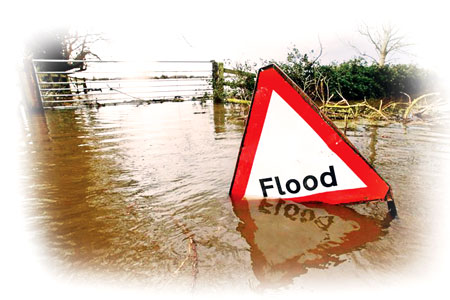Wet and wayward
The El Nino effect coupled with
rising global temperature has meant chaotic weather patterns and the mid
December monsoon rains the South and West of the country is experiencing
now.
by Dhaneshi Yatawara
Technical measures to lower greenhouse gas emission and climate
change mitigation are still ‘poorly understood’ by many nations, a
recent study done on 52 countries has revealed.
The study focused on national targets, designed to cut emissions and
mitigation strategies stated in the reports submitted by countries at
the COP21 Summit. Conducted by a German think tank, New Climate
Institute in cooperation with Deutsche Gesellschaft für Internationale
Zusammenarbeit (GIZ) GmbH, the study showed that half the countries
questioned in the process were unaware of the paths for climate change
adaptation. The report was issued on December 8.
Speaking to scidev.net, joint author of the report Niklas Höhne, a
pioneer in establishing the New Climate Institute said it was less than
half of the many countries which reported a strong understanding of
technical mitigation options.
Unending rains
This is not alarming when one considers the current disasters Sri
Lankan face including flash floods in townships due to unending rains.
Weather patterns have turned extremely chaotic to the extent where the
classical monsoon is not experienced anymore and heavy rains seems to be
falling irrespective of seasons.
More countries ignorant about mitigation strategies is not a
comforting factor but a disaster.
In Sri Lanka, some experts believe the change in the weather pattern
is an impact of the global phenomenon – climate change coupled with the
El Nino effect and not only factors like atmospheric depression in the
Bay of Bengal.
As Emeritus Prof. W.L. Sumathipala, former head of the Sri Lankan
Climate Change Secretariat, said ,“The altered weather patterns is an El
Nino effect coupled with the global temperature rise due to climate
change. As the global temperature is rising due to climate change
impacts, just an increase of a few degrees Celsius is enough to reach
the atmospheric temperature needed to create the El Nino effect,
according to the expert, who is currently serving as an advisor to the
Ministry of Environment.
“The study I conducted a few years ago revealed that Sri Lanka, being
an island and at the edge of the El Nino signal, will encounter a
different weather pattern. That is what is happening now,” said Prof.
Sumathipala.
“One has to clearly understand that El Nino is a short-term climate
change,” he added.
A reduction in the North-East monsoon rains, which normally falls in
December till February is expected while an increase in the South-West
monsoon rains, from May to September, will follow, according to his
observations. He added that since there is no warm weather with the
continuous rain for the soggy soil to dry up, there could be quick
landslides even with the slightest rain.
In an article on climate change published a few years ago, Prof.
Sumapthipala said the Colombo-Galle Road may need to be moved inland in
time to come and that the Colombo and Galle ports may also be impacted,
and eventually rendered unusable, if the current trend continues.
Climate change
 |
|
-d.ibtimes.co.uk |
Is Sri Lanka ready for climate change? “Ready or not it is already
here,” said Nalaka Gunawardene, an expert in the environment
communication field and science writer.
“The latest report from the UN Intergovernmental Panel on Climate
Change (IPCC) cautioned that South Asia will be the hardest hit,” he
said. Analysing the latest researches conducted globally, the IPCC have
said that Asia have to expect more extreme weather events such as floods
and droughts, and warned about water scarcities and food shortages.
Yet, how much the authorities know about the catastrophes that can
happen as a result of climate change, how can the country adopt these
mitigation issues and save the citizens without the support of the world
, when every country, including the world industrial giants, hold
responsibility to stop the reasons for the current climate change.
Irrespective of mitigation techniques the country adopts, if the
climate change continue globally, floods and disasters going to continue
in Sri Lanka.
In a climate impacted world, Sri Lanka will not be the only ‘damsel
in distress’ seeking a lifeline on that beach, said Gunawardene.
Why should the world come to Sri Lanka’s help, when the Maldives is
literally drowning under the waves, and the Himalayas are literally
melting away with catastrophic consequences for tens of millions, he
asked explaining the world situation.
“As a lower middle income country that is neither a small island
developing state nor a Least Developed Country, Sri Lanka will need to
define its climate adaptation needs in different terms, rather than on
strict physical or socio?economic vulnerabilities,” explained
Gunawardene.
As Gunawardene pointed out living and coping with uncertain impacts
of climate change is not a choice, but an imperative. |

